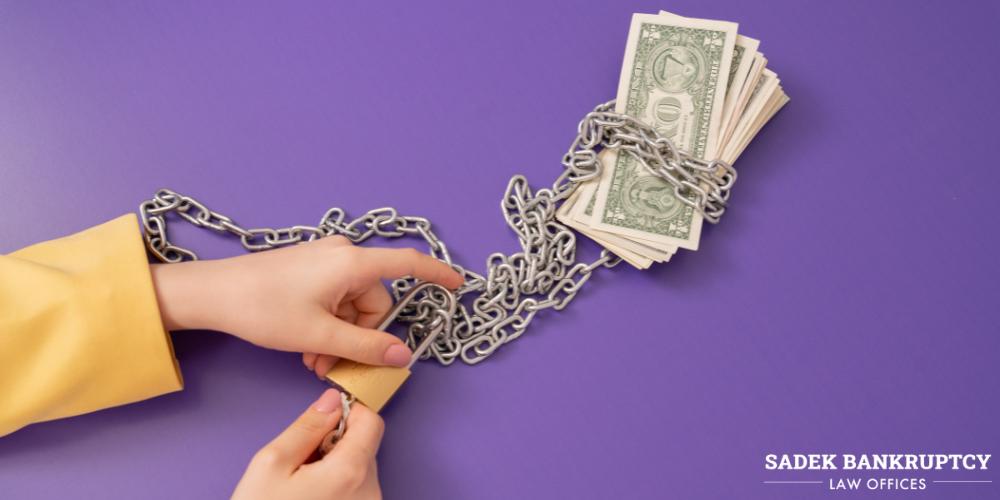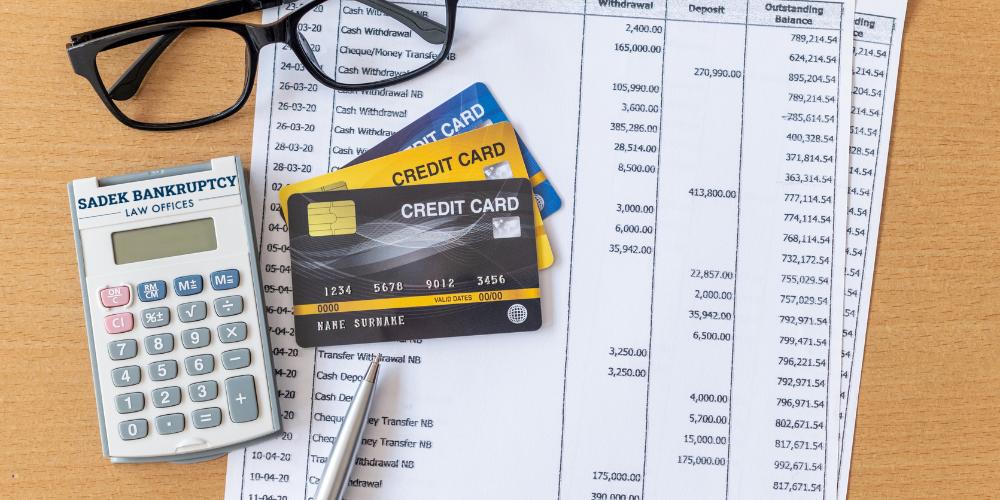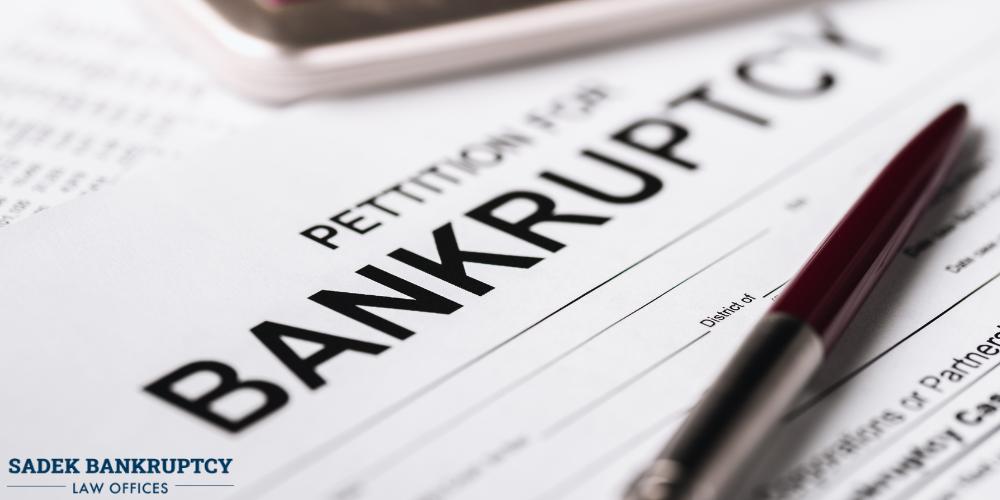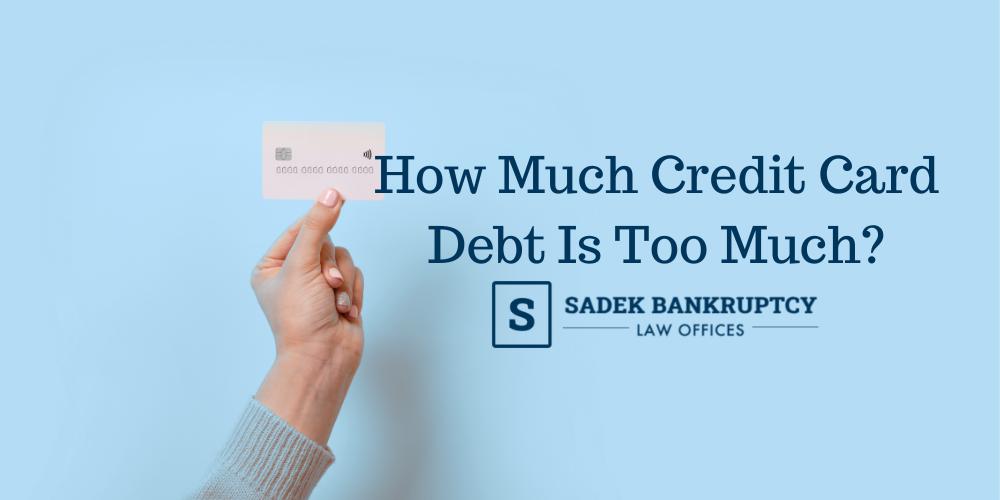Navigating the world of credit card debt can be daunting, especially when faced with the question: how much credit card debt is too much? At Sadek Law, a leading Philadelphia bankruptcy firm, we understand the complexities and challenges individuals face when grappling with overwhelming debt.
We’ll delve into the critical question of determining when credit card debt crosses the line from manageable to burdensome. Whether you’re juggling multiple cards, struggling to make minimum payments, or contemplating bankruptcy, we’re here to provide clarity and guidance on finding the right path to financial freedom. To schedule a free consultation about your situation, please call our office at 215-545-0008 today.
How Many Americans Have Credit Card Debt?
According to data from credit reporting agency TransUnion, nearly 170 million consumers carry a balance on their credit cards. Total credit card debt across the nation reached $1.13 trillion in the last quarter of 2023.
What Percent of Americans Have Credit Card Debt?
Approximately 49% of credit card holders carry a balance from month to month. The average credit card balance for an American is over $6,500, an overall increase from the past two years. In 2021, the percentage of Americans carrying a credit card balance from month to month was 39%, meaning there has been a drastic increase over the past two years. While credit cards are easy to acquire and easy to use, making debt payments to keep their balances down is a different story.
Dangers of Credit Cards
Credit card companies, although they provide a service that allows people to purchase things they might otherwise not be able to afford, stand to gain from cycles of perpetual debt. Credit cards offer convenience and purchasing power, but they also pose significant dangers if not managed responsibly.
One risk is overspending, as the ease of swiping a card can lead to impulsive purchases beyond one’s means, accumulating debt with high-interest rates. Moreover, late payments or carrying a high balance can result in damaging one’s credit score, affecting future borrowing ability and interest rates.
Identity theft and fraud are also prevalent, with hackers targeting card information for unauthorized transactions. Additionally, the temptation of minimum payments can trap individuals in a cycle of debt, prolonging repayment and accruing interest, which ultimately increases profits for the credit card issuer.
High fees, such as annual fees, foreign transaction fees, or cash advance fees, can further diminish savings. Lastly, reliance on credit cards may obscure financial awareness, hindering budgeting and saving habits.
Is Credit Card Debt Bad?
While not inherently bad, credit card debt can be detrimental if not managed properly. Using credit cards responsibly can offer benefits such as convenience and rewards, but accruing high debt levels can lead to financial stress and long-term consequences.
Many consider credit card debt to be a form of “bad” debt because of its high interest rates and low minimum payments. Credit cards also aren’t typically used to buy assets that appreciate in value. The rewards and benefits that come with credit cards can be nice, but minimum or missed payments can quickly accumulate into unmanageable debt.
How Much Debt Is Too Much Debt?

There is no set dollar amount that qualifies as “too much debt” for every person. Each person’s income and means are different, as is what would be considered “too much debt” for them. A better way to understand what “too much debt” looks like is to understand debt-to-income ratios.
Your debt-to-income ratio is your monthly debt responsibilities compared to your monthly income before taxes, which is your gross income. Debt-to-income ratios are generally shown as percentages. To calculate your debt-to-income ratio, add up all your monthly bills, including your mortgage, credit card bill, and others, and divide the total by your gross monthly income.
For example, let’s say that your monthly bills total $1,650 per month, and your gross monthly income is $4,000. When you divide 1,650 by 4,000, you get 0.4125. As a percentage, this is rounded up to 41%.
Most people consider a good debt-to-income ratio to be 35% or less. A ratio of 40% or higher can very easily become too much debt. So, ultimately, what excessive debt looks like depends on a person’s debt-to-income ratio. What may be too much for you may be manageable for another person, and vice versa.
How Much Is Too Much Credit Card Debt?
So, how much is too much credit card debt? This depends on each individual and their financial situation. If possible, the ideal is to completely pay off your credit card at the end of each month and not allow a balance to carry over. However, this isn’t always possible for consumers.
If you want to maintain a manageable amount of credit card debt, it is best to retain a credit utilization ratio under 30%. Your credit utilization ratio is the amount of credit you use compared to the credit available to you. For example, consider that your credit card has a $10,000 limit. If you spend $3,000 of that limit, you have a credit utilization ratio of 30%.
Generally, anything between 1% and 30% is manageable for most consumers. If someone exceeds 30% of their credit utilization ratio, chances are they may be in too much debt.
What Is Considered a Lot of Credit Card Debt?
This varies from person to person, as what looks like a lot of credit card debt to one person might be comfortable for another person. The average balance on credit cards across the nation falls between $4,500 and $6,500. For those living paycheck to paycheck, this could be an unmanageable debt burden. However, for someone with significant income, this may be easily managed.
How much credit card debt is too much varies widely from person to person, and is affected by several factors. These factors can include gross monthly income, credit limits, credit utilization ratio, and more.
Is $2,000 in Credit Card Debt Bad?
$2,000 in credit card debts may not necessarily be considered “bad” depending on individual circumstances and financial management. However, it’s essential to assess the context surrounding the debt. For some individuals, $2,000 may be a manageable amount that they can pay off relatively quickly without significant financial strain. In contrast, for others, it could represent a concerning level of debt if it exceeds their ability to repay promptly or if it’s part of a pattern of overspending.
Is $5,000 a Lot of Credit Card Debt?
Whether $5,000 is a significant amount of credit card debt depends on individual financial circumstances and considerations. For some people, $5,000 may not be overly burdensome and could be manageable within their budget, allowing them to make regular payments and eventually pay off the balance. However, for others, $5,000 could represent a substantial financial burden that is difficult to handle.
Is $10,000 in Credit Card Debt Bad?
$10,000 in credit card debt can indeed be concerning and is generally considered a significant amount of debt. While it may not be unmanageable for everyone, it poses several potential risks and challenges. This amount may not be too much credit card debt for some, but it can feel insurmountable for others. It’s crucial to address this debt promptly and develop a plan to pay it off efficiently to avoid accumulating further interest charges.
Is $20,000 in Credit Card Debt a Lot?
Yes, $20,000 in credit card debt is generally considered a significant amount and can present serious financial challenges. For many American consumers, this is too much debt to handle. If you find yourself with $20,000 in credit card debt, it’s important to address the situation as quickly as possible. Developing a repayment plan or seeking out another solution, such as bankruptcy, can help protect your long-term financial stability.
How Much Credit Card Debt Is Acceptable?

Most lenders would prefer for card holders to maintain a credit utilization ratio below 30%, although a ratio between 1% and 10% is more ideal. Keeping a low credit utilization ratio can also help you maintain a low debt-to-income ratio. If your credit utilization ratio exceeds 30% it may begin to affect not only your finances but also your credit score.
How Much of Your Credit Should You Use?
Most credit experts recommend keeping your credit utilization ratio below 30%. This will not only help you manage your finances, but it will also protect you from crops in your credit score. If you have a credit limit of $15,000, then 30% of this limit would be $4,500. Ideally, you want to keep your credit usage as low as you can so that it does not negatively affect your finances.
The Best Credit Utilization Ratio
While keeping your credit usage below 30% is a good rule of thumb, many experts believe that keeping your credit usage between 1% and 10% is even better. Keeping your credit usage low compared to your overall credit limits is a good idea. This way, you can have some breathing room when it comes to your overall debt-to-income ratio. You can also protect your credit score from dropping, and likely even raise your score over time.
How Does Your Credit Card Balance Affect Your Minimum Payment?
Your credit card balance can significantly affect your minimum payment. Typically, credit card minimum payments are calculated based on a percentage of your outstanding balance, usually around 1-3%, with a minimum dollar amount. However, the specific calculation method can vary between credit card issuers.
Most credit card issuers calculate the minimum payment as a percentage of your outstanding balance. For example, if your credit card company requires a minimum payment of 2% of your balance, and you have a $1,000 balance, your minimum payment would be $20.
In addition to the percentage-based calculation, credit card companies often impose a minimum dollar amount for the minimum payment. This ensures that even if your balance is low, you still have to make a minimum payment. For instance, if the minimum payment is 2% of the balance or $25, whichever is higher, and your balance is $800, your minimum payment would be $25, not $16 (which is 2% of $800).
It’s important to note that while making minimum payments keeps your account in good standing, it may not be enough to pay off your balance efficiently. To avoid accruing excessive interest charges and paying off debt more quickly, it’s advisable to pay more than the minimum whenever possible.
How to Get Out of Credit Card Debt Quickly
Consumers can take several steps to get out of credit card debts quickly and regain control of their finances. Below, we outline some effective methods that consumers have used to get out of credit card debt.
Pay Off Your Credit Card Balances
One effective strategy is to prioritize paying off credit card balances aggressively. Start by assessing your current financial situation and creating a realistic budget to allocate funds toward debt repayment. Cut unnecessary expenses and redirect those savings towards making credit card payments and reducing your overall debt.
Apply for a Balance Transfer
Another option is to apply for a balance transfer card with a lower interest rate. Balance transfer cards offer promotional periods during which you can transfer existing balances from high-interest credit cards to the new card with a lower or even 0% introductory interest rate. By consolidating your debt onto a single card with a lower interest rate, you can save money on interest and pay off your debt more quickly.
Apply for a Personal Loan or Debt Consolidation Loan
Alternatively, consumers can consider applying for a personal loan or debt consolidation loan to consolidate multiple credit card debts into a single, more manageable loan with a lower interest rate. Personal loans often have fixed interest rates and fixed monthly payments, making it easier to budget for debt repayment.
By consolidating your debts, you can simplify your finances and potentially save money on interest over the repayment period. Debt settlement is another option available to consumers, but this and debt consolidation don’t have the same legal protections as solutions like bankruptcy.
File for Bankruptcy

In more severe cases where debt becomes overwhelming and unmanageable, filing for bankruptcy may be a valid option. Bankruptcy can provide relief from overwhelming debt by liquidating assets to pay off creditors (Chapter 7) or creating a repayment plan to gradually pay off debts (Chapter 13). Although bankruptcy can affect your credit score at first, credit bureaus only report bankruptcies on credit reports for a certain amount of time. Eventually, the filing will fall off.
Bankruptcy also offers certain legal protections that other debt relief options do not. The automatic stay goes into effect as soon as one files for bankruptcy. This essentially halts any form of debt collection or negative actions, including foreclosure, repossessions, and wage garnishments. If you need room to breathe financially, bankruptcy is one of the best possible solutions.
Contact the Philadelphia Bankruptcy Attorneys at Sadek Law Today
Determining how much credit card debt is too much is a deeply personal and nuanced decision, but it’s crucial to recognize when debt becomes unmanageable and takes a toll on your financial well-being. At Sadek Law, our Philadelphia bankruptcy attorneys are dedicated to helping individuals in Philadelphia navigate their debt challenges with compassion and expertise.
Whether you’re exploring debt relief options, considering bankruptcy, or seeking guidance on debt management strategies, we’re here to provide the support and legal representation you need. Don’t let credit card debt overwhelm you; take proactive steps today to regain control of your finances and pave the way towards a brighter financial future. Contact us for a free confidential consultation and let us help you find the best solution for your unique circumstances.





